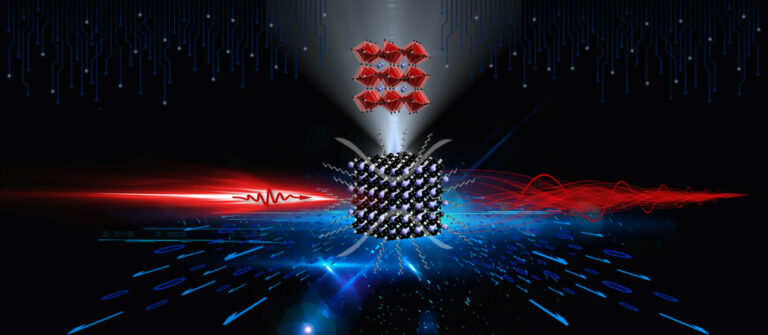Coherent Quantum Beating Induced by Lattice Distortion in Perovskite Quantum Dots.
Prof. Wu Kaifeng from the Dalian Institute of Chemical Physics (DICP) of the Chinese Academy of Sciences (CAS), along with Dr. Peter C. Sercel from the Center for Hybrid Organic Inorganic Semiconductors for Energy, recently published a study in Nature Materials on Sept. 8. The study focuses on the utilization of lattice distortion in lead halide perovskite quantum dots (QDs) to control their exciton fine structure.
QDs are tiny semiconductor nanoparticles, and their shape or crystal anisotropy results in energy splitting of their optically bright excitons, known as fine structure splitting (FSS). These excitons play a crucial role in quantum information science, such as quantum computing and quantum optics. However, it is important to suppress the magnitude of splitting for certain applications, like polarization-entangled photon-pairs.
Traditionally, studying FSS requires single or a few QDs at extremely low temperatures. This is because FSS is sensitive to the size and shape of the QDs. Measuring and controlling FSS at an ensemble-level seemed impossible unless all the QDs were nearly identical.
However, in this study, the researchers used ensemble-level femtosecond polarized transient absorption to observe clear bright-exciton FSS in solution-processed CsPbI3 perovskite QDs. This FSS was manifested as exciton quantum beats, which are periodic oscillations of kinetic traces.
What’s even more remarkable is that the beat frequency, determined by the FSS energy, can be continuously controlled by changing the temperature. This unprecedented result means that scientists can now easily control FSS through temperature adjustments.

The temperature-dependent FSS, which was discovered by the researchers, was found to be associated with the intriguing and highly dynamic lattice of lead halide perovskites. As the temperature decreased, the lead-iodide octahedral framework became more distorted.
Through calculations, it was determined that the lattice distortion resulted in an avoided crossing fine-structure gap between bright excitons in these orthorhombic-phase quantum dots (QDs). Despite variations in QD size and shape within the sample, this gap could still be detected due to the lattice distortion, as the QDs remained bounded by the pseudocubic family of crystal planes.
Prof. Wu highlighted the significance of lattice distortion in CsPbI3 perovskites, which is well-known in the photovoltaic community for its connection to the phase stability of perovskite solar cells. However, this study is the first to experimentally link it to the fine structure of excitons. The findings demonstrate that this material property can be effectively utilized to manipulate the splitting of bright excitons in quantum dots, thereby advancing quantum information technologies.
This article is republished from PhysORG under a Creative Commons license. Read the original article.
Do not forget to share your opinion with us to provide you with the best posts !




0 Comments